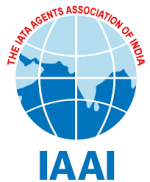The Indian government has declined permission for United Airlines to code-share with Emirates on routes originating from India, citing the absence of a traffic rights agreement between India and Dubai for these routes, BW Business World.
This decision disrupts the significant agreement signed between the two airlines last year, which aimed to enhance their network connectivity to India. Codeshare flights enable airlines to jointly market a specific route, expanding their network and improving aircraft occupancy.
Emirates President Tim Clark confirmed that United Airlines had approached the Indian government to request permission for their codeshare on Emirates flights from India. However, the government did not grant approval for this arrangement. Clark acknowledged the difficulty of the situation and acknowledged that the decision stands.
The codeshare agreement would have covered 27 destinations on the Emirates network, with a substantial portion of these routes being to India.
Government officials explained to a media house that the bilateral arrangement between India and Dubai does not permit a third airline to utilise the available seats.
United Airlines will be adversely affected by India’s stance, as they have been compelled to cancel their direct flights from New Delhi due to the closure of Russian airspace for US carriers. The closure of this airspace has substantially increased operating costs for American airlines and has resulted in United cancelling four routes, including the San Francisco to New Delhi and Newark to Mumbai routes.
United CEO Scott Kirby expressed that if Russian airspace were to reopen, the airline would swiftly increase capacity on flights to India.
India has halted the extension of flying rights to Middle Eastern countries to encourage its domestic carriers to operate wide-body aircraft and provide direct connectivity to North America and Europe.
Clark stated that this approach has adversely affected both Emirates and India, as the airline has been unable to grow since 2015. Currently, both Indian and UAE carriers are permitted to operate 60,000 seats per week, and they have nearly exhausted their allotted quota.
Clark commented on India’s stance, stating that the country has always been somewhat enigmatic regarding granting access to Emirates. He noted that this position does not benefit anyone, considering India’s high GDP growth and large non-resident Indian population who seek travel opportunities. Clark expressed his belief that a protectionist approach does not facilitate the growth of domestic airlines.
He pointed to Turkey as an example, explaining that by opening up, strengthening their own airline and establishing Istanbul as a major hub for global connections, Turkey has reaped substantial benefits. (Source: BW Business World)





